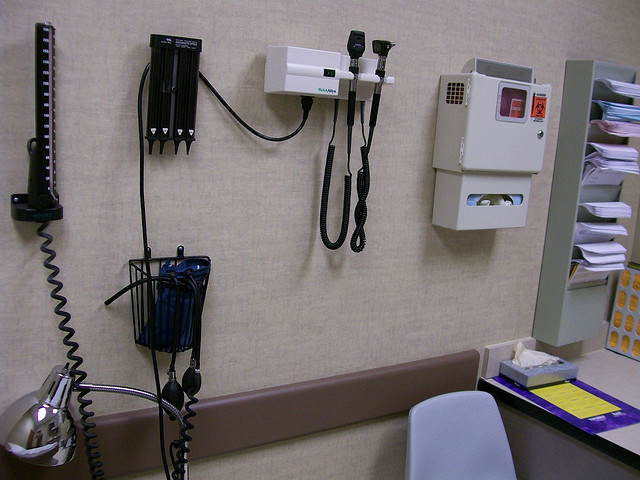If the unfamiliar creates anxiety, then a visit to the hearing specialist is particularly stressful. While most of us have experience with the family physician and the hometown dentist, the visit to the hearing specialist might be a first.
It sure would be useful to have someone describe the process up front, wouldn’t it? Well, continue reading, because as you’ll see, the process of getting your hearing evaluated is ordinarily simple, comfortable, and pain-free — with portions that can actually be fun.
So here’s how it will go:
As soon as you arrive at the office, you will check in with a staff member at the front desk who will hand you a couple of forms to fill out. Shortly after completing the forms, a hearing specialist will come with you into a room to get started with the hearing assessment, which is composed of four parts:
Part 1: Case History

The hearing specialist starts the process by getting to know you, your medical history, and your hearing loss symptoms. Preparation for this step is crucial, because this is where you get to describe to the hearing specialist the details of your hearing loss, what you will be expecting from treatment, and your personalized hearing needs.
This part is all about you: what do you want to achieve with better hearing? Do you desire to play a music instrument again? Do you desire to be more active in work meetings? Do you desire to be more involved at social gatherings? The more you can convey to your hearing specialist the better.
Next comes the testing.
Part 2: Otoscopy
The first diagnostic test to be completed is termed an otoscopy. An otoscope is used to visually explore the ear canal and eardrum to find out if your hearing loss is correlated to infections, earwax buildup, or blockages. If the cause of your hearing loss is something as basic as earwax accumulation, you could most likely start hearing better within moments simply from expert earwax removal.
Part 3: Tympanometry
The following test is known as tympanometry, used to test the eardrum and middle ear. An instrument is placed into the ear that will modify the air pressure, evaluating how your ear reacts to various pressures.
To fully grasp this test, you have to first know that hearing loss falls into one of two broad types:
- Sensorineural hearing loss — this is the most widespread hearing loss. It is also identified as noise-induced hearing loss and it involves destruction of the nerve cells of hearing.
- Conductive hearing loss — this hearing loss results from blockages or obstructions that limit sound transmission before the sound reaches the nerve cells of hearing.
Tympanometry is a test that can help to rule out conductive hearing loss, to make sure that there are no blockages, infections, or middle-ear-bone problems. Conversely, Audiometry, which is outlined next, will quantify sensorineural hearing loss.
Part 4: Audiometry
The concluding group of tests will be completed in a soundproof room. These tests are collectively referred to as audiometry and will measure your hearing range and sensitivity. Audiometry is the best method to measure sensorineural hearing loss.
With the use of an audiometer, the hearing specialist will be able to pinpoint:
- Which frequencies you can hear comfortably and which you have a tough time with.
- The minimal decibel levels, at different frequencies, at which you perceive sound.
- The precise calculations associated with your hearing loss (as captured on an audiogram).
- Your ability to understand speech, with or without background noise.
The test itself, from your outlook, will be comfortable and uncomplicated. You will be presented with sounds and speech through earphones and will be requested to display when you can hear the sounds by pressing a control or raising your hand.
Reviewing results and planning treatment
Soon after the testing is complete, your hearing specialist will evaluate your results with you. If your hearing loss will require medical or surgical treatment (due to infections or middle-ear-bone problems, for instance), your hearing specialist can make the appropriate referral.
If your hearing loss can benefit from assistive listening devices or hearing aids, your hearing specialist will work with you to select the best solution for you, your budget, your lifestyle, and your cosmetic concerns.
Pretty simple for a lifetime of better hearing, isn’t it?